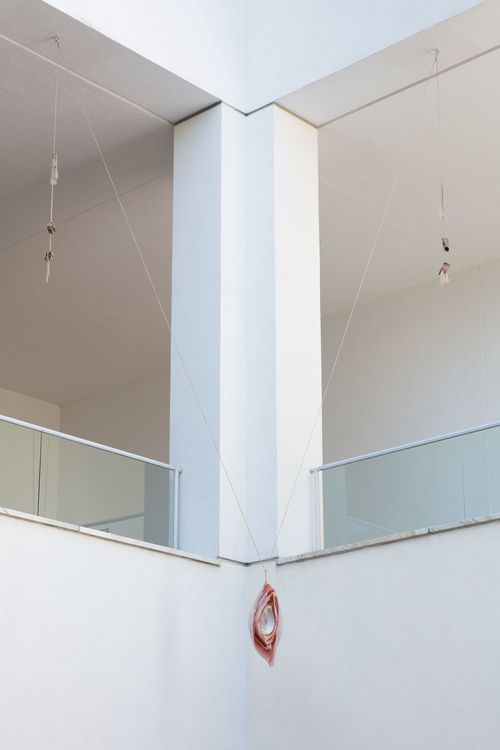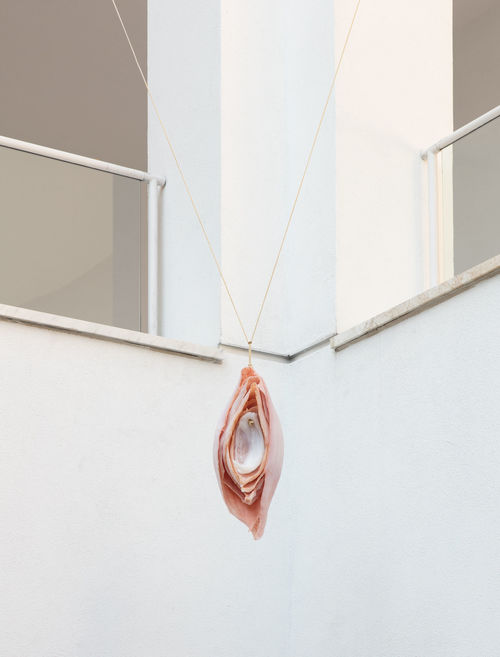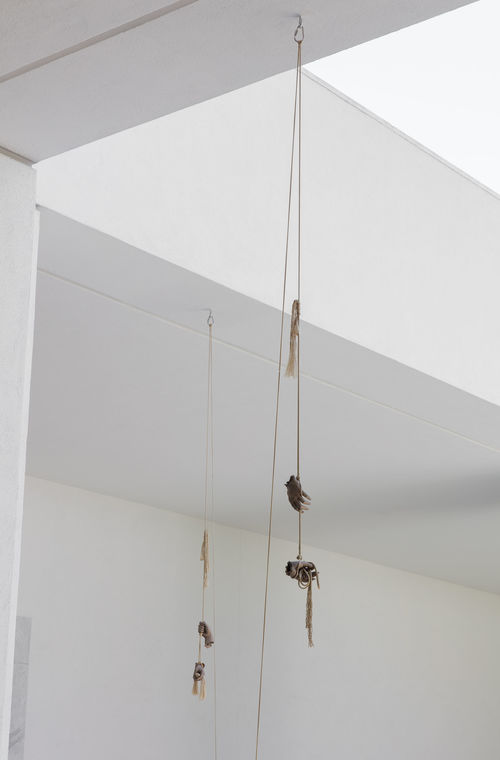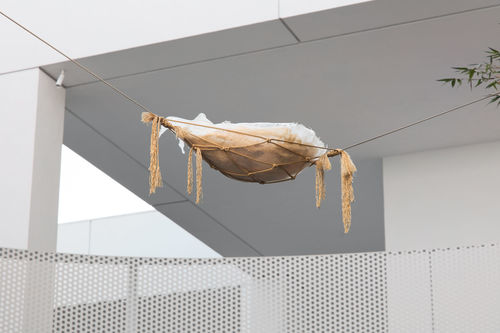
Kelly Akashi
Kelly Akashi’s sculptural objects bear a complex relationship to geometric and industrial forms. Impressionability, material memory, decomposition, and putrefaction are terms that are often used to describe her interest in materials and processes that negotiate the tricky territories of permanence and monumentality within the history of sculpture. Many works in her oeuvre pit traditional materials against their ephemeral counterparts. She often casts organic materials in bronze, an iconic medium of traditional sculpture, and displays these pieces alongside works using short-lived materials such as candle wax.
In a new installation that spans the museum's outdoor courtyard, Akashi has embraced an otherwise liminal space, playing with many of the contrasts that motivate her practice while at the same time enacting the presence of the artist through materials that evoke transition. For the two site-specific works included in the exhibition Akashi uses rope as a connective tissue for a series of sculptures that unify sections of the museum’s mezzanine. Cast-bronze elements based on the artist’s own hands pull the rope taught, acting as counterweights to central cast-rubber forms modeled in the shape of a blooming onion. These forms, seeming to freeze the onion in a moment of deterioration, are Akashi’s substitute for earlier sculptures involving wax. Formally related to the sagging of skin, folds, genitalia, the human core, and stomach, it also acts as a stand-in for the physical body. At the same time the work functions architecturally, as the planes delineated by the expanses of rope defined a volume playing on and against that of the courtyard.












